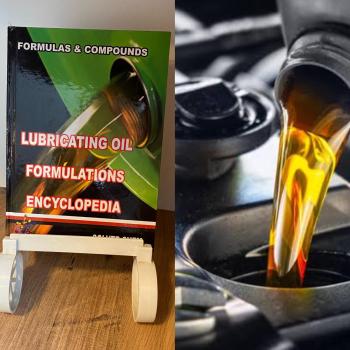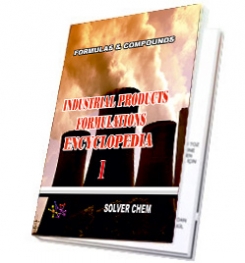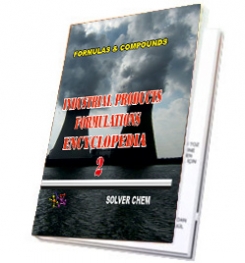
A look back in history can illustrate how oil discovery, use and technology have changed over time. From the Chinese digging wells up to 800 feet using bits attached to bamboo poles in 347 A.D. to the 1849 distillation of kerosene that would eventually replace whale oil as an illuminant, to the current process of using computers, horizontal drilling and 3-D seismic data to locate and extract oil, there has been an increase in technology that has literally changed the world.
Time can easily be spent reading the history of oil discovery and production and the methods used in oil refinement. The information that is not readily available is the history of additive usage and formulation change timetables among the different lubricant manufacturers.
Finding ways to identify when changes occur, such as formulation or product replacement, can relieve a large amount of stress involving condition-based oil changes. Sampling new lubricants and tracking their information can help identify both incorrect lubricant deliveries and product replacements.

Table 1. New Reference Oils
Case in Point
A manufacturing facility is dedicated to getting its oil analysis program up and running. It is implementing contamination control measures on all critical equipment and has installed appropriate sample valves on equipment deemed critical enough to monitor via oil analysis. Critical components are being sampled on a 30-day interval while noncritical components are monitored on a quarterly basis or during scheduled lube changes.

Aware of the need to monitor incoming oils, the plant also established a documented new oil sampling procedure. When new drums are delivered, on-site viscosity and particle counting is performed prior to acceptance. In addition, a full sample is sent off to a commercial laboratory for properties testing.
Table 1 shows a five-sample history of new reference oils. All samples are from an EP ISO VG 220 Group I gear oil (GE-220-M-G1-EP).
During a typical delivery of new lubricant, the established sampling procedure was followed. On-site viscosity testing and particle counting were not out of the ordinary; therefore the lubricant was accepted and set aside until the commercial lab results could be reviewed for final product verification prior to use.
Table 2 shows the results of the two drums tested. As can be seen, there was reason for alarm. The additive values were significantly different than the historical samples of this new lubricant. Additionally, the acid number implied a problem with the original lubricant.

Table 2. New Oils
Because office personnel do not have direct access to the lubricant tested, a comparison to sample data from other lubricants used on-site was made to see if a mix-up could have been made in labeling.
Table 3 shows data from two other types of ISO VG 220 lubricants; neither of which matches the results from the two new drums of oil. As can be seen in Table 3, these are samples from synthetic gear oils, one with an EP additized oil and the other consisting of AW additives.

Table 3. Synthetic Gear Oils
Finding Answers
Performing a visual check on the oil drum revealed a partial answer. The lubricant was in fact a different product than what was believed to have been ordered. The product name was similar to the original, which explains the oversight during the initial delivery. After conducting the appropriate phone calls and research, it was determined that the product delivered was indeed the new product line from the lube manufacturer. Luckily, the new lubricant is compatible with the previously used lubricant and the product is now part of the lubricant list with the appropriate lubricant identification designator assigned.

From an evaluation standpoint, the lubrication technicians closely monitored the equipment that received top-ups from this new lubricant. Due to the differences in additives and acid number, it is important to take this information into account when evaluating the time for a complete lubricant change.
This case can speak volumes for the people in charge of the lubrication program for this facility. The days of "oil is oil" are long gone and have been replaced by close attention to results and a drive to "make things right."

synthetic or semi synthetic
industrial gear oil
LUBRICATING OIL
FORMULATIONS
ENCYCLOPEDİA
is enough.
LUBRICATING OIL FORMULATION ENCYCLOPEDIA has many formulations of greases, complex grease, lithium grease production,sodium greases formula, formulation,multigrade engine oils manufacturing process,motor oils making, gear oil production, synthetic engine oils,semi synthetic motor oils,gasoline oils,diesel oils production process,composition of turbine oils,transmission oil manufacturing, production of cycle motor engine, tractor oils,mineral based motor engine production,heat transfer oils, slideway oils formulation, formulations, cutting oils formula,formulas grinding oils,mould oils manufacturing process and etc.
All lubricating oils in the encyclopedia are producible easily.You need no help and no technıcal support. The encyclopedia is enough to produce lubricating oils and engine oils itself.
LUBRICATING OIL
FORMULATIONS
ENCYCLOPEDIA
is written clear and understandable.


HARD BOOK E BOOK
RELATED TAGS: What is gear oil,how to make gear oils,industrial gear oils,making gear oils,synthetic gear oil making,production of gear oils,manufacturing process of industrial gear oil, types of gear oils,semi synthetic gear oil manufacturing,formulation of gear oils, formula,formulas, ingredients of industrial gear oils,synthetic industrial gear oil composition,compounds,using synthetic gear oils, standart of gear oils.
SOLVERCHEM PUBLICATIONS

|
|

|
|

|
|
